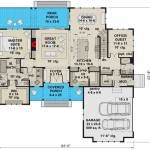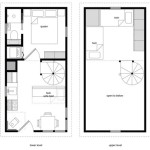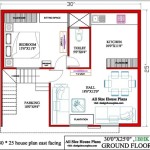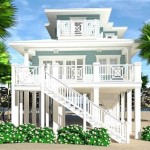House plans with lots of windows, also known as daylighting designs, prioritize the incorporation of expansive windows, skylights, and glass doors to maximize natural light and create a bright and airy living environment. This architectural approach has gained immense popularity in recent years due to its numerous benefits.
The abundance of windows in these plans not only floods the interior with natural light but also reduces the reliance on artificial lighting, leading to energy savings. Additionally, the presence of large windows offers stunning views of the surrounding landscape, bringing the outdoors in and creating a sense of connection with nature.
In the following sections, we will delve into the advantages of house plans with lots of windows, explore design considerations for optimizing natural light, and present inspiring examples of homes that embrace this concept.
Incorporating ample windows into house plans offers a myriad of advantages, including:
- Enhanced Natural Light
- Reduced Lighting Costs
- Improved Indoor Air Quality
- Extended Views
- Passive Solar Heating
- Connection to Nature
- Increased Curb Appeal
- Boosted Property Value
By integrating these elements, house plans with lots of windows create brighter, healthier, and more visually appealing living spaces.
Enhanced Natural Light
House plans with lots of windows prioritize the incorporation of ample glazing to maximize natural light, creating brighter and more inviting living spaces. Natural light offers numerous benefits, including:
- Improved Mood and Well-being: Exposure to natural light has been shown to boost mood, reduce stress levels, and improve overall well-being. The increased brightness and warmth create a more cheerful and uplifting atmosphere.
- Enhanced Cognitive Function: Studies have demonstrated that natural light can enhance cognitive function, improving concentration, memory, and overall brain performance. The brighter environment stimulates the brain and promotes alertness.
- Reduced Eye Strain: Natural light is easier on the eyes than artificial light, reducing strain and fatigue. The diffused and indirect nature of daylight creates a more comfortable visual environment, especially for tasks that require prolonged focus.
- Circadian Rhythm Regulation: Exposure to natural light helps regulate the body’s circadian rhythm, which is essential for maintaining a healthy sleep-wake cycle. The bright light during the day signals the body to stay awake and alert, while the reduced light levels in the evening promote relaxation and sleep.
By incorporating ample windows into house plans, homeowners can harness the power of natural light to create brighter, healthier, and more productive living environments.
Reduced Lighting Costs
House plans with lots of windows offer significant potential for reducing lighting costs by maximizing the use of natural light. Here are some key points to consider:
- Reduced Reliance on Artificial Lighting: With ample windows allowing natural light to flood the interior, the need for artificial lighting is greatly reduced, especially during daylight hours. This can lead to substantial savings on electricity bills.
- Efficient Use of Daylight: Windows strategically placed throughout the home can distribute natural light evenly, minimizing the need for additional lighting fixtures. By carefully considering the orientation of the house and the placement of windows, homeowners can optimize daylighting and reduce energy consumption.
- Passive Solar Heating: During the winter months, windows can be used to capture passive solar heat, reducing the reliance on artificial heating systems. By absorbing sunlight during the day and releasing it into the home at night, windows can help maintain a comfortable indoor temperature while minimizing energy costs.
- Integration with Smart Home Systems: House plans with lots of windows can be integrated with smart home systems to further enhance energy efficiency. Smart sensors and automated controls can adjust artificial lighting based on the availability of natural light, ensuring optimal use of both natural and artificial sources.
By incorporating these strategies, homeowners can significantly reduce their lighting costs while creating brighter and more comfortable living spaces.
Improved Indoor Air Quality
House plans with lots of windows promote improved indoor air quality through several mechanisms:
Increased Ventilation
Large windows and sliding doors allow for increased ventilation, which is crucial for maintaining good indoor air quality. By opening windows and doors, stale indoor air is replaced with fresh outdoor air, diluting pollutants and reducing the concentration of harmful substances.
Reduced Moisture and Mold Growth
Proper ventilation helps control moisture levels within the home, reducing the risk of mold and mildew growth. Excess moisture can create a breeding ground for these microorganisms, which can release allergens and irritants into the air. By allowing moisture to escape through open windows, house plans with lots of windows help maintain a drier and healthier indoor environment.
Elimination of Volatile Organic Compounds (VOCs)
Many building materials and household products emit volatile organic compounds (VOCs), which can contribute to indoor air pollution. VOCs can cause a variety of health problems, including respiratory irritation, headaches, and nausea. By providing ample ventilation, house plans with lots of windows help eliminate VOCs and improve indoor air quality.
Improved Airflow and Circulation
Well-placed windows and doors create airflow and circulation patterns within the home. This movement of air helps distribute fresh air throughout the house, preventing pockets of stagnant air where pollutants can accumulate. Proper airflow also helps remove odors and other airborne contaminants.
In summary, house plans with lots of windows promote improved indoor air quality by increasing ventilation, reducing moisture and mold growth, eliminating VOCs, and improving airflow and circulation. By incorporating these design elements, homeowners can create healthier and more comfortable living spaces.
Extended Views
House plans with lots of windows offer breathtaking extended views that seamlessly connect the indoors with the outdoors. This architectural feature provides homeowners with the following benefits:
Immersive Outdoor Experience
Large windows and glass doors create a sense of immersion, bringing the beauty of the surrounding landscape into the heart of the home. Homeowners can enjoy panoramic views of nature, whether it’s a tranquil garden, a picturesque mountain range, or a bustling cityscape. The seamless transition between indoor and outdoor spaces enhances the overall living experience.
Increased Natural Light
Windows not only provide extended views but also maximize natural light, creating brighter and more inviting living spaces. The abundance of natural light floods the interior, reducing the need for artificial lighting and creating a more cheerful and uplifting atmosphere. The combination of extended views and natural light promotes a sense of well-being and connection to the outdoors.
Improved Indoor-Outdoor Flow
House plans with lots of windows often incorporate sliding glass doors or folding walls that open up to outdoor living areas. This seamless integration allows for effortless transitions between indoor and outdoor spaces, encouraging outdoor activities and creating a more expansive living environment. Homeowners can entertain guests, dine al fresco, or simply relax and enjoy the fresh air without leaving the comfort of their home.
Enhanced Property Value
Properties with extended views are highly sought after and command a premium in the real estate market. The ability to enjoy stunning views from multiple rooms within the home adds significant value to the property. Homeowners can leverage this feature to increase the resale value of their home or enhance its rental potential.
In summary, extended views in house plans with lots of windows provide homeowners with immersive outdoor experiences, increased natural light, improved indoor-outdoor flow, and enhanced property value. By incorporating these design elements, homeowners can create truly exceptional living spaces that embrace the beauty of the surrounding environment.
Passive Solar Heating
Maximizing Sunlight Absorption
Passive solar heating is a design strategy that utilizes the sun’s energy to heat a building naturally. House plans with lots of windows play a crucial role in this process by maximizing the absorption of sunlight. South-facing windows are particularly effective, as they receive the most direct sunlight throughout the day. By incorporating large windows on the south side of the home, homeowners can capture the sun’s energy and convert it into heat.
Thermal Mass
Thermal mass refers to the ability of a material to absorb and store heat. In passive solar heating, materials with high thermal mass, such as concrete, brick, or stone, are used to absorb the sun’s heat during the day. As the sun sets and temperatures drop, these materials release the stored heat into the interior of the home, providing a steady source of warmth throughout the night.
Insulation and Air Sealing
To maximize the effectiveness of passive solar heating, it is essential to minimize heat loss through insulation and air sealing. Proper insulation in walls, ceilings, and floors prevents the escape of heat, while air sealing measures, such as caulking and weatherstripping around windows and doors, minimize drafts and air leakage. By reducing heat loss, homeowners can retain the heat absorbed by the thermal mass and maintain a comfortable indoor temperature.
Overheating Prevention
While passive solar heating is an effective way to reduce heating costs, it is important to consider overheating prevention measures, especially in warmer climates. Overheating can occur when excessive heat is absorbed during the day, leading to uncomfortable indoor temperatures. To prevent this, house plans with lots of windows should incorporate overhangs, awnings, or blinds to shade windows during the hottest parts of the day. Additionally, thermal mass can be strategically placed to absorb excess heat and release it gradually overnight.
Connection to Nature
Biophilic Design
Biophilic design is a concept that emphasizes the innate human desire to connect with nature. House plans with lots of windows embrace this principle by creating a seamless connection between the indoors and outdoors, bringing the beauty and tranquility of nature into the living space. Large windows and glass doors provide expansive views of the surrounding landscape, inviting nature to become an integral part of the home’s environment.
Enhanced Well-being
Studies have demonstrated that connecting with nature through ample windows and natural light can have a profound impact on human well-being. Exposure to natural elements, such as sunlight, fresh air, and greenery, has been shown to reduce stress levels, improve mood, and boost cognitive function. By incorporating large windows into house plans, homeowners can create spaces that promote physical, mental, and emotional well-being.
Increased Relaxation and Tranquility
The presence of windows with views of nature can create a sense of relaxation and tranquility within the home. The calming effects of nature can help reduce anxiety, promote restful sleep, and provide a sanctuary for rejuvenation. Whether it’s the gentle swaying of trees, the soothing sounds of, or the vibrant colors of a garden, nature’s beauty can transform a house into a haven of peace and serenity.
Inspiring Creativity and Productivity
Natural light and views of nature have been found to stimulate creativity and productivity. The connection with the outdoors can provide inspiration, reduce distractions, and enhance focus. House plans with lots of windows create an environment that fosters innovation, problem-solving, and artistic expression. By incorporating ample glazing into their homes, individuals can create spaces that support their creative endeavors and boost their productivity.
Increased Curb Appeal
House plans with lots of windows not only enhance the interior living experience but also contribute significantly to the home’s curb appeal. Here are several ways in which ample windows elevate the aesthetic value of a property:
Enhanced Visual Interest
Large windows create a visually striking and dynamic facade, adding character and interest to the home’s exterior. The interplay of natural light and shadow through the windows creates a sense of depth and dimension, making the house stand out from its surroundings. The variety of window shapes, sizes, and styles allows for endless design possibilities, enabling homeowners to customize the home’s appearance and create a unique architectural statement.
Architectural Harmony
Windows are an essential architectural element that can complement and enhance the overall design of the home. By carefully considering the placement, proportion, and style of windows, architects can create a cohesive and harmonious exterior. Large windows can balance the mass of the house, create rhythm and flow in the facade, and accentuate other architectural features such as columns, porches, and balconies.
Connection to the Outdoors
Windows serve as a bridge between the interior and exterior spaces, drawing the beauty of the surrounding environment into the home. Expansive windows offer panoramic views of the landscape, creating a sense of connection with nature from within the home. This visual connection enhances the curb appeal by making the home appear more inviting, open, and spacious.
Natural Light Enhancement
The abundance of natural light emanating from the windows not only brightens the interior but also adds a warm and inviting glow to the exterior. The soft, diffused light creates a welcoming ambiance that draws people in. Well-illuminated homes exude a sense of warmth, comfort, and livability, making them highly appealing to potential buyers or visitors.
Boosted Property Value
House plans with lots of windows not only enhance the aesthetic appeal and functionality of a home but also contribute significantly to its overall property value. Here are several ways in which ample windows can increase the value of a property:
- Enhanced Curb Appeal: As discussed earlier, large windows create a visually striking and inviting exterior, enhancing the home’s curb appeal. Properties with attractive facades are more likely to attract potential buyers and command higher prices in the real estate market.
- Increased Natural Light: Ample windows allow for an abundance of natural light to flood the interior of the home, creating brighter and more inviting living spaces. Natural light is highly sought after by homebuyers, as it not only reduces the need for artificial lighting but also creates a more cheerful and healthy living environment. Properties with well-lit interiors are often valued higher than those with limited natural light.
- Improved Indoor-Outdoor Flow: House plans with lots of windows, particularly those with large sliding glass doors or folding walls, offer a seamless transition between indoor and outdoor spaces. This seamless flow creates a sense of spaciousness and connectivity with nature, making the home more desirable to potential buyers. Properties that seamlessly blend indoor and outdoor living are highly valued in the real estate market.
- Energy Efficiency: Large windows can contribute to the energy efficiency of a home by maximizing natural light and reducing the reliance on artificial lighting. This can lead to lower energy costs for homeowners, making the property more attractive to buyers who are increasingly prioritizing energy-efficient features.
In summary, house plans with lots of windows offer numerous benefits that enhance the overall value of a property. By incorporating ample glazing into their homes, homeowners can create spaces that are not only beautiful and functional but also highly desirable in the real estate market, leading to increased property value and a higher return on investment.










Related Posts








